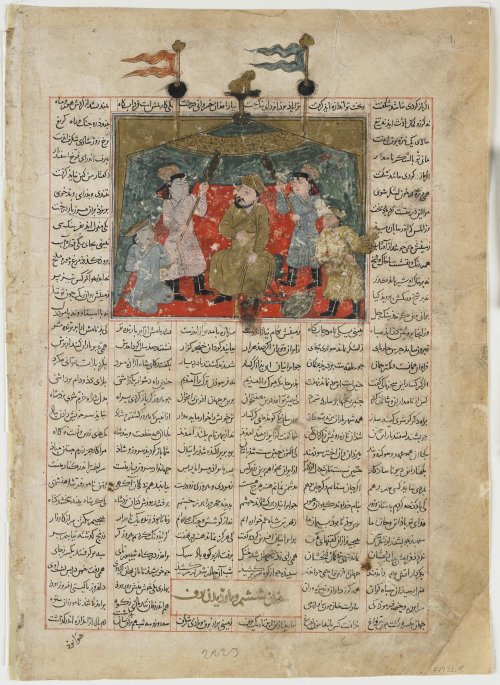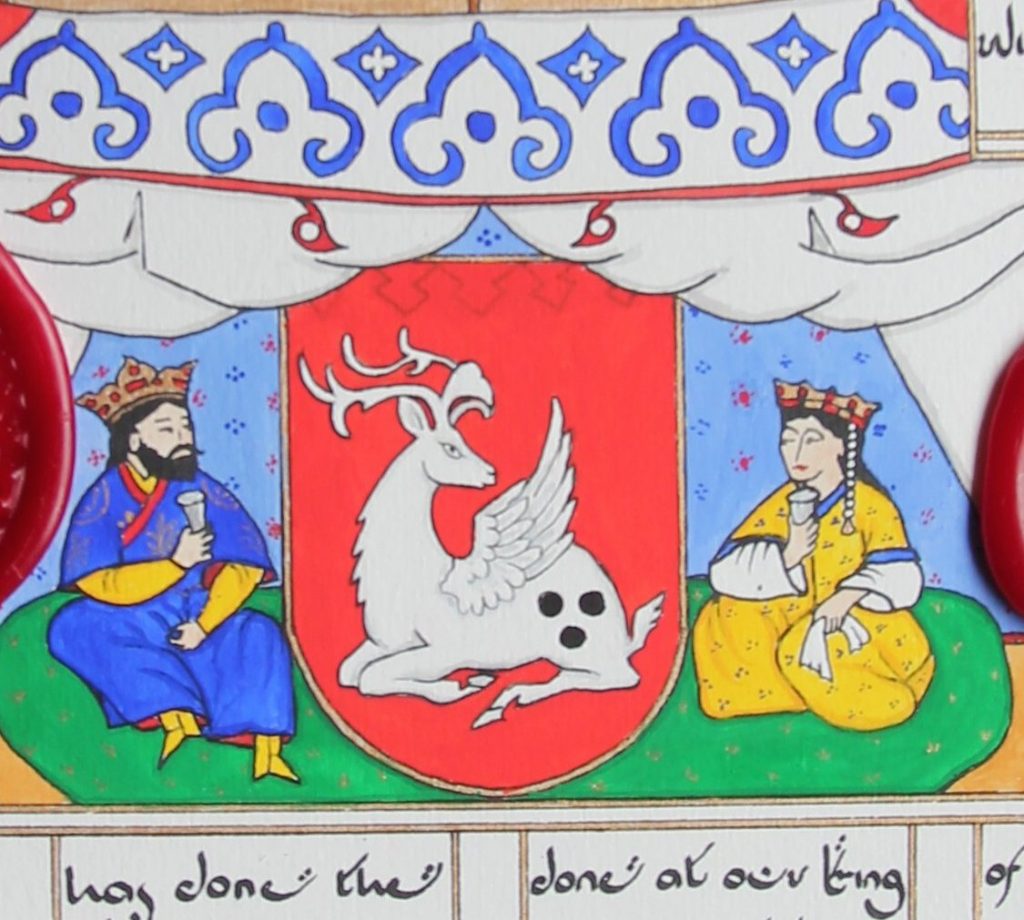A piece in 14th century Mongolian style, with a faux Persian script.
With an increasing number of people interested in Mongolian culture, I wanted to create a Mongolian style Award of Arms design, to add to the collection used in Lochac.

I completed the first instance of this piece for my friend Natal’ia, who specialises in Medieval Mongolian food.
Research and Design
The overall design and key elements are based on the Shahnama (Book of Kings) c1330, Ali b. Husayni Bahmani. The manuscript known as the Great Mongol Shahnama, is believed to have been produced in the 1330s at Tabriz, but is now widely dispersed (folios appear in many collections). The Mongols were under Persian rule at the time, and the Mongolians continued to use this Persian style for manuscripts well into the 15th century.

Source: Wikipedia

Another key reference was a page from the same Book of Kings showing Gurgsar kneeling as a prisoner in Isfandiyar’s tent. I can’t find a public domain image of this, but you can see it on the Alamy site.

Source: National Museum of Asian Art

Source: The Met

Construction
The pages in the Book of Kings typically have 4 or 6 columns. I used the 4 column design, with an image in the centre, which was a common way of breaking up the page. Several examples show flags from the image extending to the broad upper margin, which I added into the base design.
As with any SCA ‘scroll’, the challenge is to find a way to work the device, seals and signatures into the design. Here, the central area depicts the rulers (adapted from The Met manuscript image), with the device on a banner hanging at the back of the tent.
The text is a faux Persian script I created for a Persian AoA I did some years ago. The letter forms are adapted from Persian script, but it can be read as English (I realise there are pros and cons to this approach).
I was really pleased by the finished piece, and Natal’ia was delighted by it.

